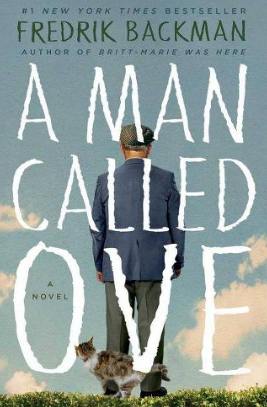“A Man Called Ove”: An Eloquent Testament to Human Connection

Simultaneously sarcastic and heartwarming, the novel A Man Called Ove follows the journey of an old man coping with the death of his wife, the arrival of young neighbors, and a street cat who can’t seem to leave him alone. Recently adapted as an American movie, A Man Called Otto, starring Tom Hanks, the Swedish novel has been growing in popularity, and rightly so. Packed with beautiful prose, witty humor, and lovable characters, A Man Called Ove is a book that many are bound to love.
In recent years, author Frederick Backman has received praise for his unique writing style both in his home of Sweden as well as internationally in countries such as the United States. This excellent command of language was evident throughout A Man Called Ove, especially in Ove’s relationship with his late wife, Sonja. “People said Ove saw the world in black and white. But she was color. All the color he had,” Backman illustrates. The frequent mention of color in Ove’s story helps to contribute to the reader experiencing the deep love he felt for Sonja as well as how he begins to recover from his loss by finding a similar love in others around him. The use of such a poetic metaphor shows Backman’s ability to create novels that have both a significant emotional impact on their reader and an undeniable artistic quality.
Backman also successfully integrates humor into the novel to balance out these more emotional dives into love and loss. While definitely a complex character, Ove is given many of the characteristics of a stereotypical stubborn old man, which contributes to the novel’s fond but sarcastic tone. He doesn’t understand modern technology or jobs and thinks of all young people as stupid and worthless (at least at the beginning of the novel). He also criticizes everything that his new young neighbors do with a grumbling tone, from the way they try to park their UHaul truck or the way they don’t know how to complete household repairs. However, the reader comes to love Ove as he slowly warms up to his neighbors and the stray cat that seems to always hang around his house. Ove’s interactions with his neighbors’ personalities prove to be comical – the woman’s maternal criticisms meant to encourage Ove to be kinder to and more accepting of love from her and her family matched with Ove’s reluctant but accepting grumbling often results in conversations that are equally wholesome and humorous. The innocent manner by which her children describe Ove and laugh at him when he attempts to be serious and threatening also contribute to both this light-hearted tone and the reader’s love for both Ove and his new friends.
Though some may view the novel’s sarcastic tone as insensitive as it is sometimes is used in more serious moments, such as Ove’s contemplations on suicide, these scenes still effectively evoke sadness for Ove and his struggle with his wife’s death in the reader, and the tone helps to balance the reader’s response to these scenes so that they do not impact them in a significant negative manner and they can still enjoy the book.
After spending 337 pages with Ove, his sarcasm, his obsessions, and his stubborn but deep manner of loving, it can be easily concluded that A Man Called Ove might be a perfect fit for those looking for a book that will make them laugh, cry, and smile, at times simultaneously.

Dakotah is a senior and a Journalism II student this year. She is very excited to be returning to The Paw for her first year as an Editor-in-Chief. Outside...











